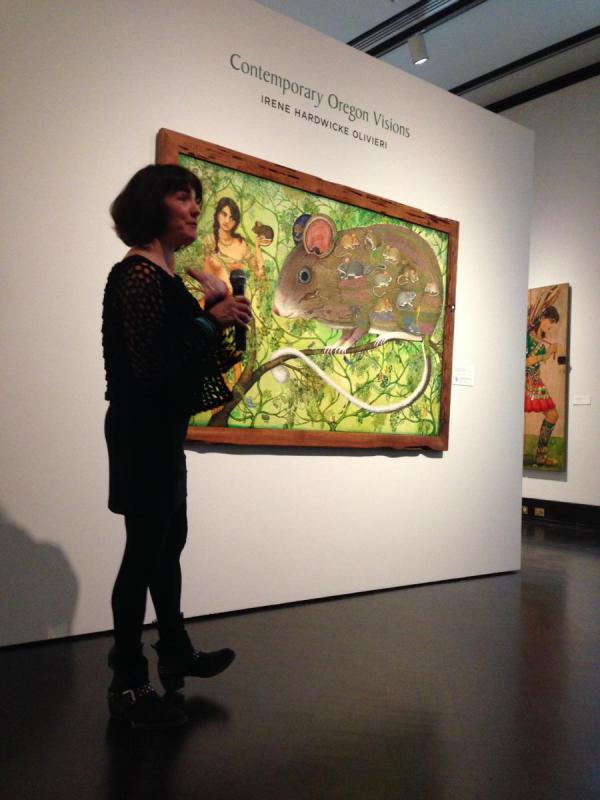Last week, Jo Hamilton and Irene Hardwicke Olivieri gave an artist talk at the Jordan Schnitzer Museum of Art for their joint exhibit, Contemporary Oregon Visions (see “A Tale of Two Artists“). It was great to see the huge turnout on a weeknight — all the seats were taken and people were standing in the aisles.
Hamilton spoke first, discussing her background as an artist in Scotland and working as an artist in Portland. Hamilton went into detail about her ongoing “mugshot” portrait series. The audience asked several questions about the identities of the people behind the mug shots. Hamilton explained that the portraits were supposed to capture a fleeting moment in time — an emotion, an expression — but not to capture an exact likeness, so as that it would be difficult to identity the real people behind the portraits; a sort of humanizing-through-art execise.(See mugshot series in photo below.)

After the talk, she mentioned that, at first, Portland audiences were a bit standoffish to her work, which is surprising considering her “crochet paintings” have a distinctly Portland feel; think the craft movement meets classical portraiture. Hamilton also mentioned that she wished there was a museum like the Shnitz in Portland. (Score one for Eugene! Maybe Eugene isn’t “little Portland” but Portland is “big Eugene.”)

Olivieri (seen in photo above next to her painting “I drop everything when I see you”) spoke passionately about how many of her paintings are about ridding skeletons from the family closet. If a photo is worth a thousand words then an Olivieri painting is worth a thousand stories. And of course, we got to hear about her great love and admiration for packrats. “Most animals go around looking for food or for a mate,” she said. “Packrats are totally driven by the desire to collect things.” The little critters, she explained, secrete a “honey-gold” substance called amberat to protect all the little treasures in their collections. She told the crowd how archaeologists and biologists have found pack rat nests dating back millennia.
Overall, it was a great talk that demystified the artistic process.